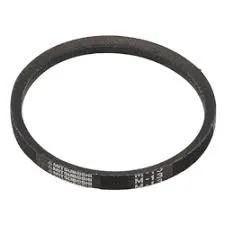- Arabic
- French
- Russian
- Spanish
- Portuguese
- Turkish
- Armenian
- English
- Albanian
- Amharic
- Azerbaijani
- Basque
- Belarusian
- Bengali
- Bosnian
- Bulgarian
- Catalan
- Cebuano
- Corsican
- Croatian
- Czech
- Danish
- Dutch
- Afrikaans
- Esperanto
- Estonian
- Finnish
- Frisian
- Galician
- Georgian
- German
- Greek
- Gujarati
- Haitian Creole
- hausa
- hawaiian
- Hebrew
- Hindi
- Miao
- Hungarian
- Icelandic
- igbo
- Indonesian
- irish
- Italian
- Japanese
- Javanese
- Kannada
- kazakh
- Khmer
- Rwandese
- Korean
- Kurdish
- Kyrgyz
- Lao
- Latin
- Latvian
- Lithuanian
- Luxembourgish
- Macedonian
- Malgashi
- Malay
- Malayalam
- Maltese
- Maori
- Marathi
- Mongolian
- Myanmar
- Nepali
- Norwegian
- Norwegian
- Occitan
- Pashto
- Persian
- Polish
- Punjabi
- Romanian
- Samoan
- Scottish Gaelic
- Serbian
- Sesotho
- Shona
- Sindhi
- Sinhala
- Slovak
- Slovenian
- Somali
- Sundanese
- Swahili
- Swedish
- Tagalog
- Tajik
- Tamil
- Tatar
- Telugu
- Thai
- Turkmen
- Ukrainian
- Urdu
- Uighur
- Uzbek
- Vietnamese
- Welsh
- Bantu
- Yiddish
- Yoruba
- Zulu
Aug . 10, 2024 05:50 Back to list
Understanding Various Sizes of V-Belt Pulleys for Effective Mechanical Applications and Performance Optimization
Understanding V-Belt Pulley Sizes A Comprehensive Guide
When it comes to mechanical power transmission, v-belt systems play a vital role in ensuring efficient operations across various industries. Central to these systems are v-belt pulleys, which serve as the fundamental components connecting the drive motor to driven equipment. Understanding v-belt pulley sizes is crucial for effective design, maintenance, and operation of machinery, as these sizes directly impact efficiency, performance, and longevity of the equipment.
What is a V-Belt Pulley?
A v-belt pulley is a wheel with a V-shaped groove that is designed to accommodate v-belts, which are flexible belts used to transmit power between shafts. The V-shape allows the belt to fit securely, providing a larger surface area for frictional engagement, which is essential for transmitting power effectively without slipping.
Importance of Correct Sizing
Choosing the correct size of v-belt pulleys is critical for several reasons
1. Efficiency Properly sized pulleys ensure optimal belt tension, which minimizes slippage while maximizing power transmission efficiency. If the pulley is too large or too small, it can lead to excessive wear and energy loss.
2. Alignment Correct sizing helps maintain the alignment between the pulley and the associated components. Misalignment can result in uneven wear, increased friction, and ultimately, mechanical failure.
3. Speed Regulation The diameter of the pulley directly affects the speed at which connected equipment operates. Larger pulleys rotate slower than smaller ones, allowing for speed adjustments essential in various applications.
v belt pulley sizes

Key Factors in Determining Pulley Size
1. Belt Size The size and type of the v-belt being used are foundational in determining the appropriate pulley size. Common v-belt sizes include A, B, C, and D series, each designed to fit specific applications.
2. Speed Ratios Understanding the required speed ratio between the driver and the driven equipment is imperative. The appropriate pulley sizes can be calculated using the formula \[ \text{Speed Ratio} = \frac{\text{Diameter of Driven Pulley}}{\text{Diameter of Driver Pulley}} \] This formula helps define the right dimensions that ensure the desired operational speed.
3. Load Requirements The load that the system will handle must be considered when selecting pulley sizes. Heavier loads may require larger pulleys to effectively distribute the weight and prevent slippage.
4. Space Constraints Physical space in which the pulleys must fit can limit size options. Thus, carefully measuring the available space and understanding layout constraints is vital.
Maintenance Considerations
Once the right pulley sizes are selected and installed, regular maintenance is essential to ensure longevity and optimal performance. This includes checking for wear and tear, ensuring proper alignment, and replacing belts and pulleys as needed.
Conclusion
In summary, understanding v-belt pulley sizes is fundamental for anyone involved in mechanical design, repair, or maintenance. By recognizing the factors that influence pulley sizing—from belt type and speed ratios to load requirements—one can ensure an efficient and effective power transmission system. When correctly sized and maintained, v-belt pulleys can significantly enhance the performance, reliability, and efficiency of machinery across various applications, making them an indispensable component in today’s industrial landscape.
-
Upgrade Power Steering Pump Belt for Smooth, Quiet Operation
NewsAug.27,2025
-
Precision Timing Belt & Chain: Engine Performance & Durability
NewsAug.26,2025
-
Precision Lathe Drive Belts: Durable & Reliable Performance
NewsAug.25,2025
-
84.5 Serpentine Belt: Durable & Precision Fit for Your Engine
NewsAug.24,2025
-
Premium Ribbed Drive Belts for Quiet Power Transmission
NewsAug.23,2025
-
High-Performance Vehicle Timing Belt for Engine Precision
NewsAug.22,2025

